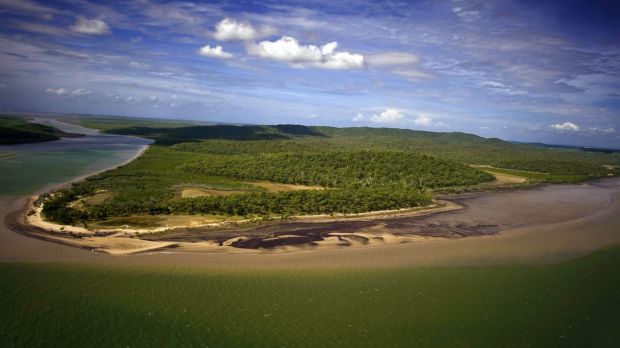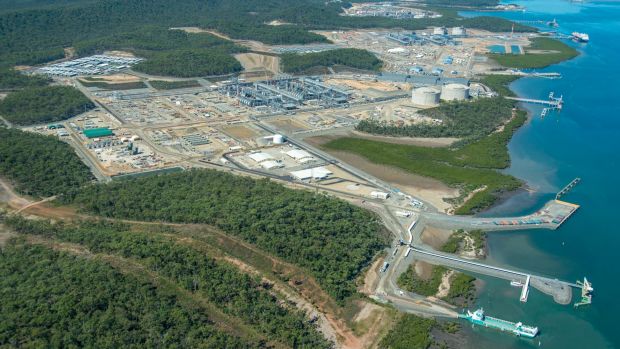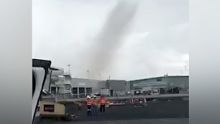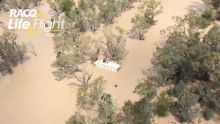Not that long ago, so many people were falling over themselves to get to Gladstone that the council was paying others to leave.
Police were being called to direct traffic at open-home inspections, while other out-of-towners slept in their cars, so keen were they to partake in the "modern-day gold rush" unfolding in this coastal central-Queensland city of 60,000.
More QLD News Videos
Gladstone deserted after the boom
The Queensland town of Gladstone saw a huge increase in population and house prices with the LNG boom but that very quickly ended.
As news of Australia's energy "crisis" unfolded this week, Gladstone has become notorious as the town that sucked up the nation's cheap gas reserves, converting it to LNG and exporting it to Asia.
But if you thought the place at the centre of it all has done well from the wild ride sparked by the simultaneous construction of three LNG plants on nearby Curtis Island in 2010, you should think again.
When local shop owner Jenelle Knight starts talking about the struggles her community is facing to keep Gladstone alive, she breaks down in tears.
"The people here are resilient, [but] I think they have really been pushed this time. We have lost a lot of people, a lot of businesses, and I think there is a lot more just holding on and that is really sad," she says.
Thing is, locals like Knight are no strangers to the "boom-bust" cycles of life in an industrial town, but the scale of the last mega-project took everyone by surprise.
The fabrics of society were torn when 14,500 new jobs – 25 per cent of the then population – appeared almost at once, as the unprepared city rushed to build housing estates, apartment complexes and motels.

Rents skyrocketed, with seniors no longer able to afford to live in the community they'd known all their lives. Teachers, nurses and police were either forced to move away by the high costs, or threw in their day job to join the crews constructing the plants.
Business owners, too, lost staff to jobs that were paying "obscene amounts" of money and struggled to maintain a grip on wages as house and rental prices soared through the roof.

But when construction was done, the rapid increase in rent, wages and people retracted just as quickly and hit the city hard – seven years on, about 1200 homes sit empty throughout the region, more than a dozen empty shops line the city's main strip, and Gladstone Regional Council is working hard to coax people back into the community.
Property frenzy
Domain economist Dr Andrew Wilson says median house prices spiked 26 per cent in 18 months, reaching a high of $475,000 in December 2011. Five years later, the median price is $300,000.
When you have a community that loses almost its entire senior population, you lose your volunteers, your community advocates but you more importantly, lose your babysitters and your grandparents.
Glastone mayor Matt Burnett
Ray White Gladstone director Andrew Allen says there was a house vacancy rate of about 2 per cent when the workforce flooded the city.
"We had to call police to direct traffic at one open house," he says.

"About 60 per cent of new housing constructed during that two-to-three-year window was sold as investment properties and primarily external to Gladstone – all sold through external channels from Sydney, Brisbane."
Allen says a lot of "mum and dad" investors snatched up properties on advice from property marketeers who didn't "understand the economics of the town".

"I don't think people external to the town really realised, there was all this talk about 14,000 jobs for the next 30 years, for the lifespan of the plant but that is not true, they have hired about 500 full-time jobs, that is an enormous difference."
In 2012, construction of workers camps were finalised on Curtis Island and the swarm of tenants living in the city was "uplifted overnight".

The Gladstone population became transient, with people signing leases for three months at a time, and the community began to drift apart.
Country Women's Association Gladstone branch president Heather Wieland, who was around when the once "fishing village" went through its first big boom in the 1960s, says many who didn't own property left the city.

"Locals in Gladstone moved to Gracemere, Rockhampton, Bundaberg – anywhere to get out of Gladstone because they couldn't afford to pay the rent," she says. "The companies were making offers to the real estate agents for housing so the people in there were given the choice of paying higher rent or getting out."
Origins of the gas rush
The boom was sparked when Queensland Curtis LNG, Australia Pacific LNG and Santos GLNG each hired construction giant Bechtel to build a liquefied natural gas complex within six years just offshore of the city.
Since then the companies' fortunes have also fallen, with billions wiped off their investments when the international gas price dived.
The chief executives of the companies behind the three LNG plants, which kicked off production last year, attended a meeting with Prime Minister Malcolm Turnbull and senior ministers this week and agreed to revise their domestic gas production forecasts.
As Turnbull announced it was "utterly unacceptable" for our nation, a large gas exporter, to not provide affordable gas to domestic consumers, the Gladstone community continues to struggle to rebuild itself in the construction aftermath.
Gladstone Regional Council mayor Matt Burnett said he had gone to the LNG providers and told them essential services like nurses, teachers and police were leaving the city either to work on the island or because they couldn't afford to stay.
"They were taking nurses from our hospital, police officers were becoming security guards for about 50 grand more than they were on," he says.
The council was given a pool of funds to subsidise rent for those who were struggling most – seniors, last-year apprentices, families and essential services.
"Most of it was paying to try and keep people here but sometimes we would go through their budget and say to them they can't afford to stay here. At the end of this process, you are still going to be broke ... so then we gave them a relocation fee," Cr Burnett says.
With the loss of many of the city's senior citizens, the social fabric of the community was also lost, he says.
"We went from a town with a social fabric of having strong family connections to being very separated, people don't want to talk about it but it is true," he says. "When you have a community that loses almost its entire senior population, you lose your volunteers, your community advocates but you more importantly, lose your babysitters and your grandparents.
"They [LNG producers] just don't see it, all they see is the bottom line and they are working for shareholders and I get that, but now they are actually wanting to be part of our community ... and fair enough, but the damage is done, you can be part of our community but you have to help us pick up the pieces," he says.
"They have shown genuine interest in working with us ... I am happy to have them in our town, but they didn't handle their construction like they should have done."
An Australia Pacific LNG spokesman says the transition from construction to operations brought "new opportunities" to the area. "Australia Pacific LNG is planning for a major scheduled maintenance shutdown at its Curtis Island Facility which will create work for hundreds of people, the vast majority of which will be local," he says.
Queensland Curtis LNG, Santos GLNG and Bechtel were contacted for comment.
From no job applicants to hundreds
Gladstone Chamber of Commerce president Carl Carter said the town wasn't ready for the boom and was lacking in skilled workers.
"There was a massive recruitment drive which impacted on not only local industry here but local businesses paying significantly more than what they were getting paid in their current roles so there was a big drain of employees off to the projects," he says.
"Small business and even existing industry were all fighting to find the right people and pay above the odds to hold on to those people, that was a huge issue for us at the start.
"You go completely in the opposite way now, where you had a job and you get two or three applications for, you are getting two to three hundred applications for, so it has completely flipped the other way now because there are that many people looking for work, it is bizarre."
Unemployment rates soared to 6.3 per cent at the end of the construction phase in 2015, up 2.6 per cent from the same timeframe in 2014, according to the Federal Department of Employment.
Bill Robertson Toyota dealer principal James Robertson turned to purchasing a property in order to retain staff who were being offered higher wages on the island in what he called a "modern-day gold rush".
"It was difficult for mechanics and staff to live, we were trying to recruit a service adviser which was a $50,000-per-year job, we did the calculations and said you can't afford to have this job and live here," he says.
"We ended up buying a house for some mechanics to live in so that was about the peak and we paid about $515,000 for a four-bedroom, two-bathroom house ... It is now worth about $300,000.
"Coming down off the boom, there is definitely the sense that any money you earned you have lost as well."
Retailer Michelle Wilson has owned her shop Ginger Says in the near-deserted main street of Gladstone for more than a decade and says diversity is the only way to survive. "We have had quite a few shops in the main street that have closed or relocated and we have more to come," she says.
Robertson said with many small businesses being at the "bottom of the cycle" in terms of profitability, they were fighting hard to be able to sponsor local sports teams and groups to keep the community going.
"We have let some things go but we definitely feel that we want to ride out the hard times and keep sponsorships in place because we still plan to be here in the future," he says. "Our customers come from these community groups so it is just part of being there for the long time.
"That is the way of the world I think, we just have to suck it up and get on with it as best we can."
















0 comments
New User? Sign up